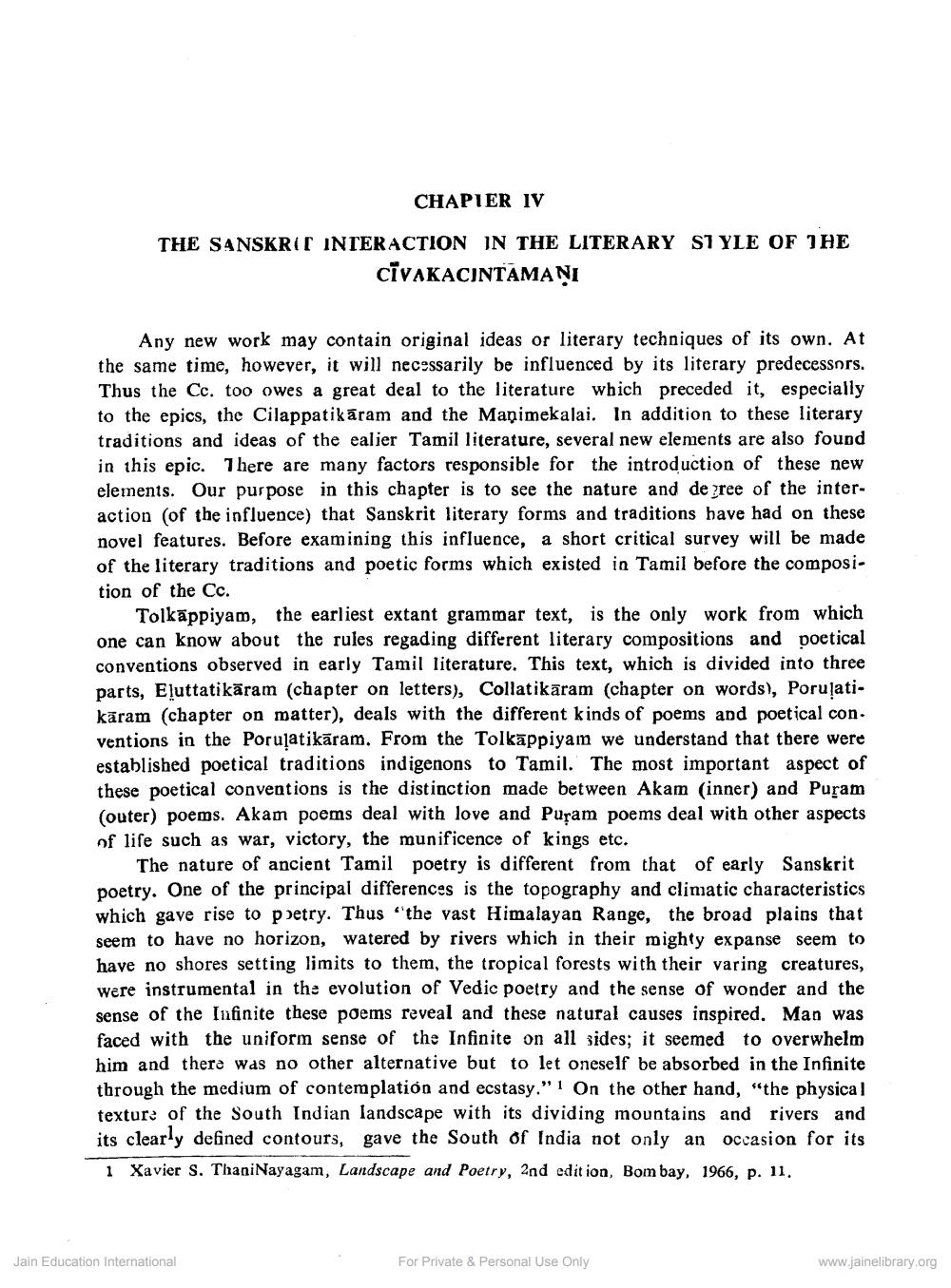________________
CHAPIER IV THE SANSKRIT INTERACTION IN THE LITERARY SIYLE OF THE
CIVAKACINTAMANI
Any new work may contain original ideas or literary techniques of its own. At the same time, however, it will necessarily be influenced by its literary predecessors. Thus the Cc. too owes a great deal to the literature which preceded it, especially to the epics, the Cilappatikāram and the Manimekalai. In addition to these literary traditions and ideas of the ealier Tamil literature, several new elements are also found in this epic. There are many factors responsible for the introduction of these new elements. Our purpose in this chapter is to see the nature and dezree of the interaction of the influence) that Sanskrit literary forms and traditions have had on these novel features. Before examining this influence, a short critical survey will be made of the literary traditions and poetic forms which existed in Tamil before the composition of the Cc.
Tolkāppiyam, the earliest extant grammar text, is the only work from which one can know about the rules regading different literary compositions and poetical conventions observed in early Tamil literature. This text, which is divided into three parts, Eļuttatikāram (chapter on letters), Collatikāram (chapter on words), Poruļatikāram (chapter on matter), deals with the different kinds of poems and poetical con. ventions in the Poruļatikāram. From the Tolkāppiyam we understand that there were established poetical traditions indigenons to Tamil. The most important aspect of these poetical conventions is the distinction made between Akam (inner) and Puram (outer) poems. Akam poems deal with love and Puram poems deal with other aspects of life such as war, victory, the munificence of kings etc.
The nature of ancient Tamil poetry is different from that of early Sanskrit poetry. One of the principal differences is the topography and climatic characteristics which gave rise to poetry. Thus the vast Himalayan Range, the broad plains that seem to have no horizon, watered by rivers which in their mighty expanse seem to have no shores setting limits to them, the tropical forests with their varing creatures, were instrumental in the evolution of Vedic poetry and the sense of wonder and the sense of the Infinite these poems reveal and these natural causes inspired. Man was faced with the uniform sense of the Infinite on all sides; it seemed to overwhelm him and there was no other alternative but to let oneself be absorbed in the Infinite through the medium of contemplation and ecstasy."1 On the other hand, “the physical texture of the South Indian landscape with its dividing mountains and rivers and its clearly defined contours, gave the South of India not only an occasion for its 1 Xavier S. ThaniNayagam, Landscape and Poetry, 2nd edition, Bombay, 1966, p. 11.
Jain Education International
For Private & Personal Use Only
www.jainelibrary.org




